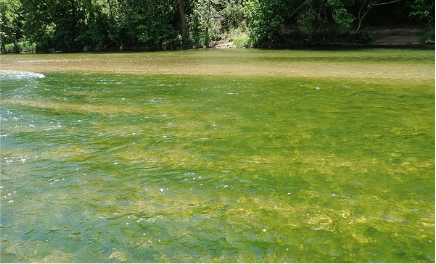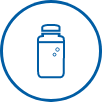Water samples are collected just below the stream surface to measure water chemistry and determine if toxins are present. Bacteria samples are also collected near the stream bank, where people are likely to be exposed while swimming or fishing. All samples are sent to laboratories for analysis.
How are these data used?
Water samples are used to collect data for four chemical and two human health indicators.

Phosphorus, like nitrogen, is an essential
nutrient found in rivers and streams. Excess phosphorus can stimulate overgrowth of algae,
cyanobacteria (which can produce toxins) and aquatic plants. These may result in algal blooms, low dissolved oxygen levels, or degraded conditions for macroinvertebrates and other aquatic life.
Where are phosphorus samples collected?
samples at the midpoint
of the sample reach.

To learn more, see the
NRSA Field Operations Manual.




